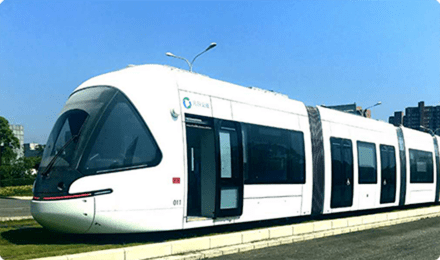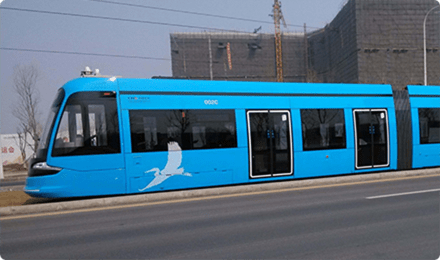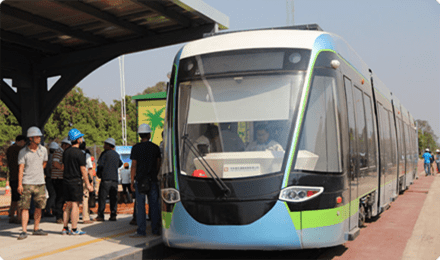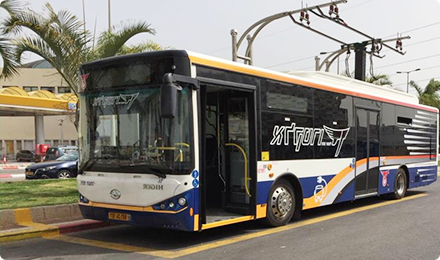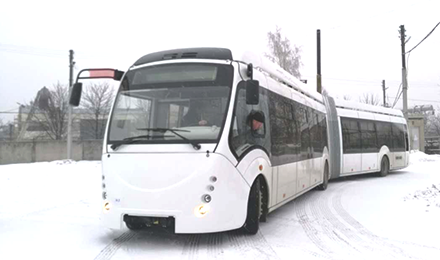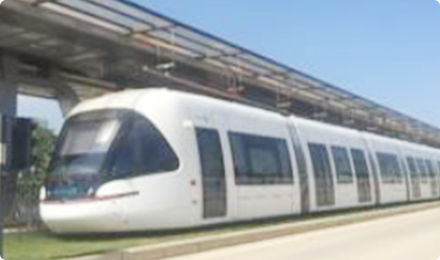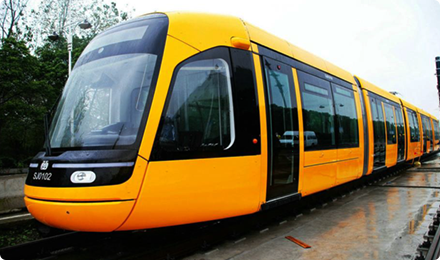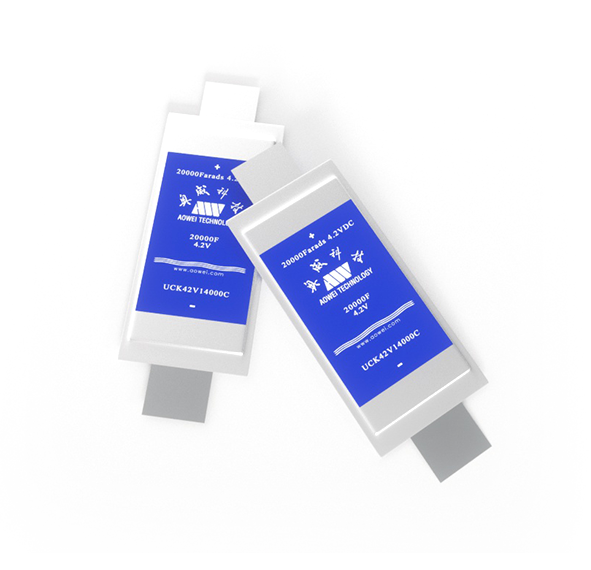
UCR series Ultracapacitor (UC)
Benefits and motivation of bus
electrification
- Less carbon emission
- Energy saving (regenerative braking)
- More reliable (operational reliability& warrant)
- Low average expense each lifecycle
- Having Government policy support
Application example: UC electric bus
Why ultracapacitor
- Long operation lifetime - UC cell has 50000 - 100000 cycles of operation lifetime
- No limitation for the daily mileage - UC is charged at the end bus stop during the bus drivers’ break
- Better heat management - UC cell has lower chance of overcharge and over discharge
- Safer - UC does not burn/explode even if the faults happen
- Clean - UC contains no harmful or toxic substances
- Lighter battery - Almost 1/3 weight as normal battery
- No need to balance UC overnight - this can be accomplished by a separate Blockheater

Market advantage
Comparing traditional EDLC with ultracapacitor
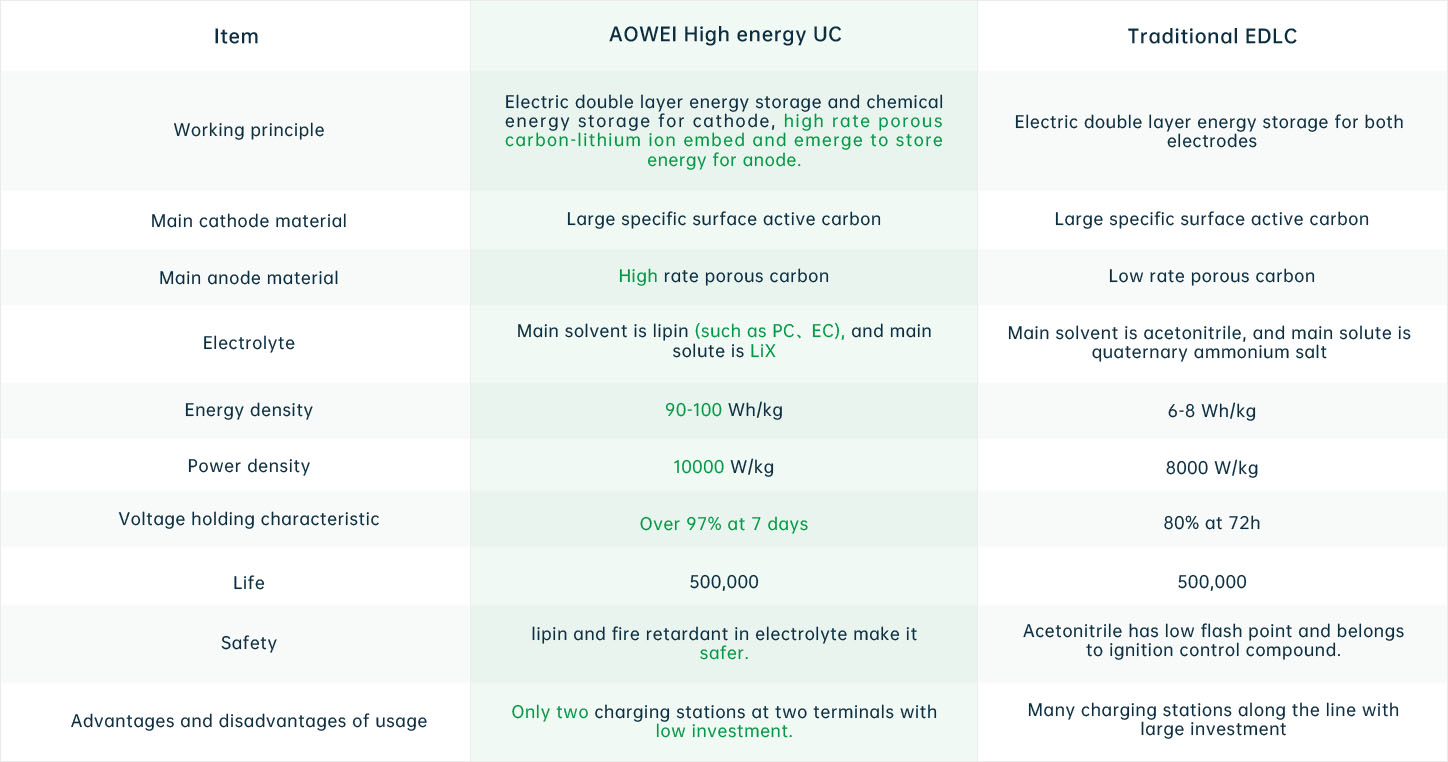
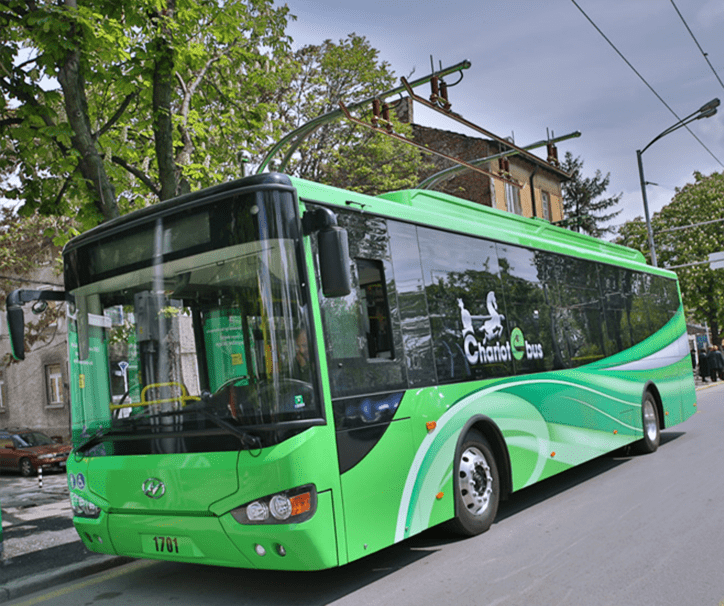
Application Example
Bus in Sofia 2014
- Operated and maintained by the StolichenElektrotransport; 20 kWh UC –1st Generation;
- Line № 11 (trolleybus line) -> flat profile, length of 11.2 km, crossing;
- DC/DC charging stations at terminals only, using trolleybus power supply;
- Average energy consumption, recorded by BELICON: 0.95 kWh/km (no auxiliary consummators);
- 1.60 kWh/km with 100% occupancy and A/C on;
- Recuperation rate: 32.2 %, highest 39%;
- Operating temperature range: -15℃ to 40℃;
- Siemenselectric motors, 2x67 kW;
 Energy savingAowei UC can support regenerative braking operation so as to perform energy saving
Energy savingAowei UC can support regenerative braking operation so as to perform energy saving-
 Wide operating temperatureAowei UC works well from -40 °C to 65 °C
Wide operating temperatureAowei UC works well from -40 °C to 65 °C -
 High charging efficiencyAowei UC offers 3-10 minutes charging time
High charging efficiencyAowei UC offers 3-10 minutes charging time -
 Good after-sales serviceAowei provides up to 10 years’full manufacturing warranty
Good after-sales serviceAowei provides up to 10 years’full manufacturing warranty -
 Wide State-of-charge (SOC) rangeLinear relationship between SOC and voltage
Wide State-of-charge (SOC) rangeLinear relationship between SOC and voltage -
 Higher SafetyGood thermal stability and firefighting protection
Higher SafetyGood thermal stability and firefighting protection -
 Flexible charge wayAowei UC bus can be charged by charging stations or mobile charger
Flexible charge wayAowei UC bus can be charged by charging stations or mobile charger -
 Good adaptivityAowei UC can be applied in various vehicles such as bus, tram,metro train, etc
Good adaptivityAowei UC can be applied in various vehicles such as bus, tram,metro train, etc
Extreme cold condition
R&D for low temperature
solutions
- Solution for extreme cold working condition(UC system,communication, pantograph), pilot project in Urumqi and Minsk Belarus;
- On 16th,Feb,2017, first 18m UC bus developed by BKM in Belarus off production line,first project achievement of China-Belarus Industrial Park.
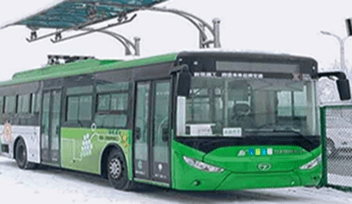
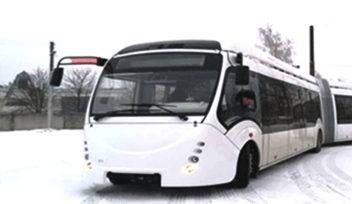
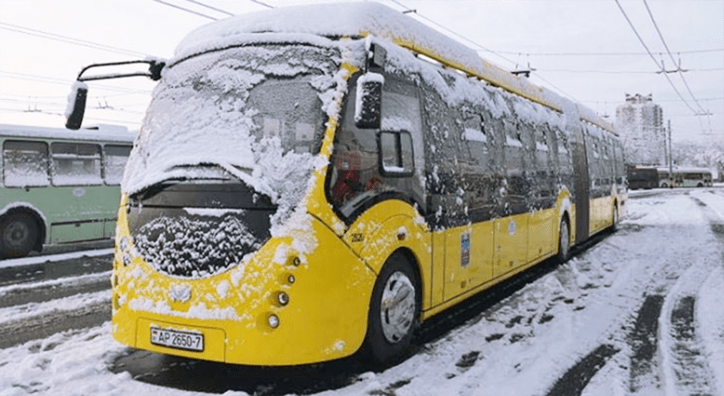
High Energy UC powered Tram and Electric Bus
System
Comparing traditional EDLC with ultracapacitor



